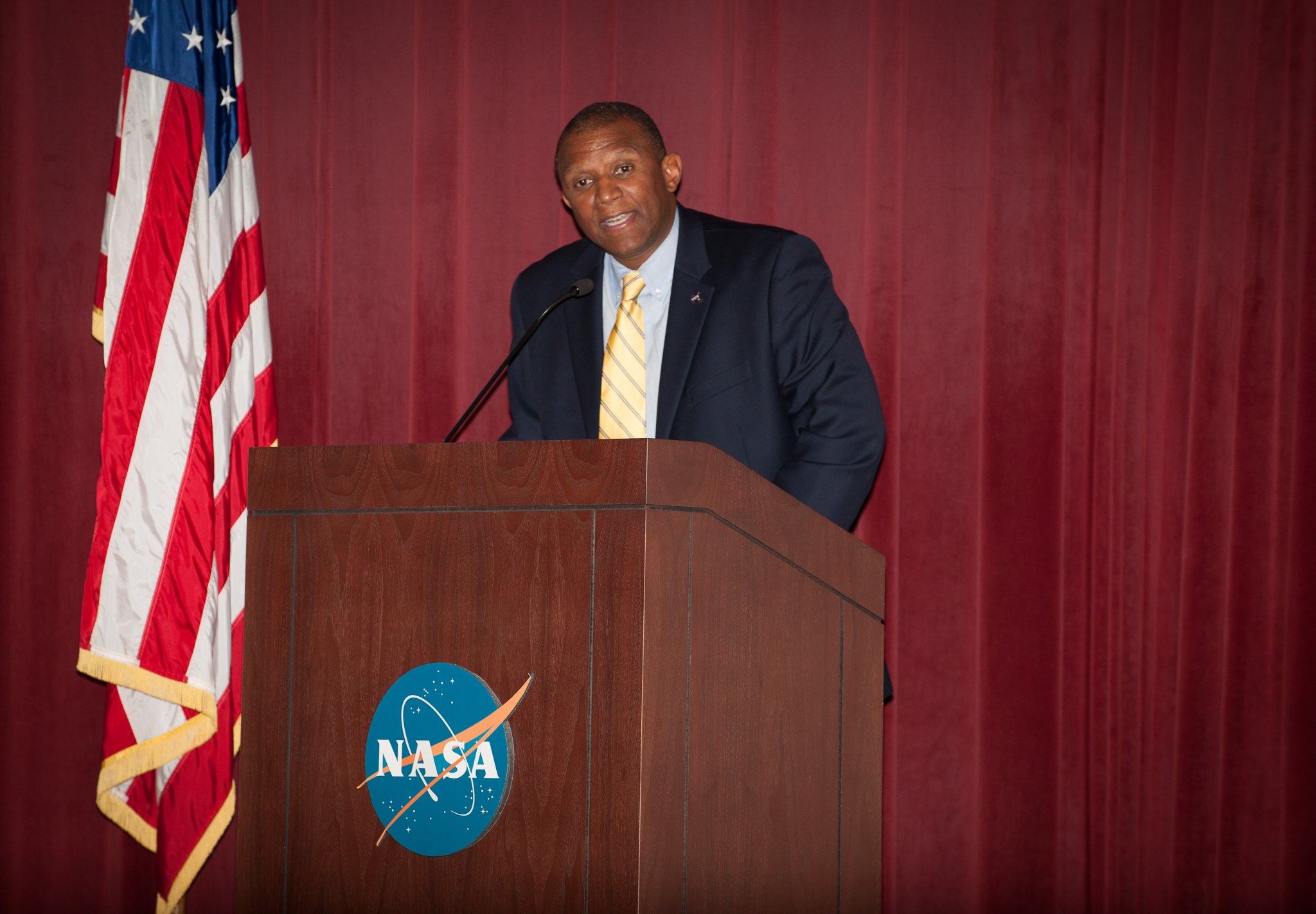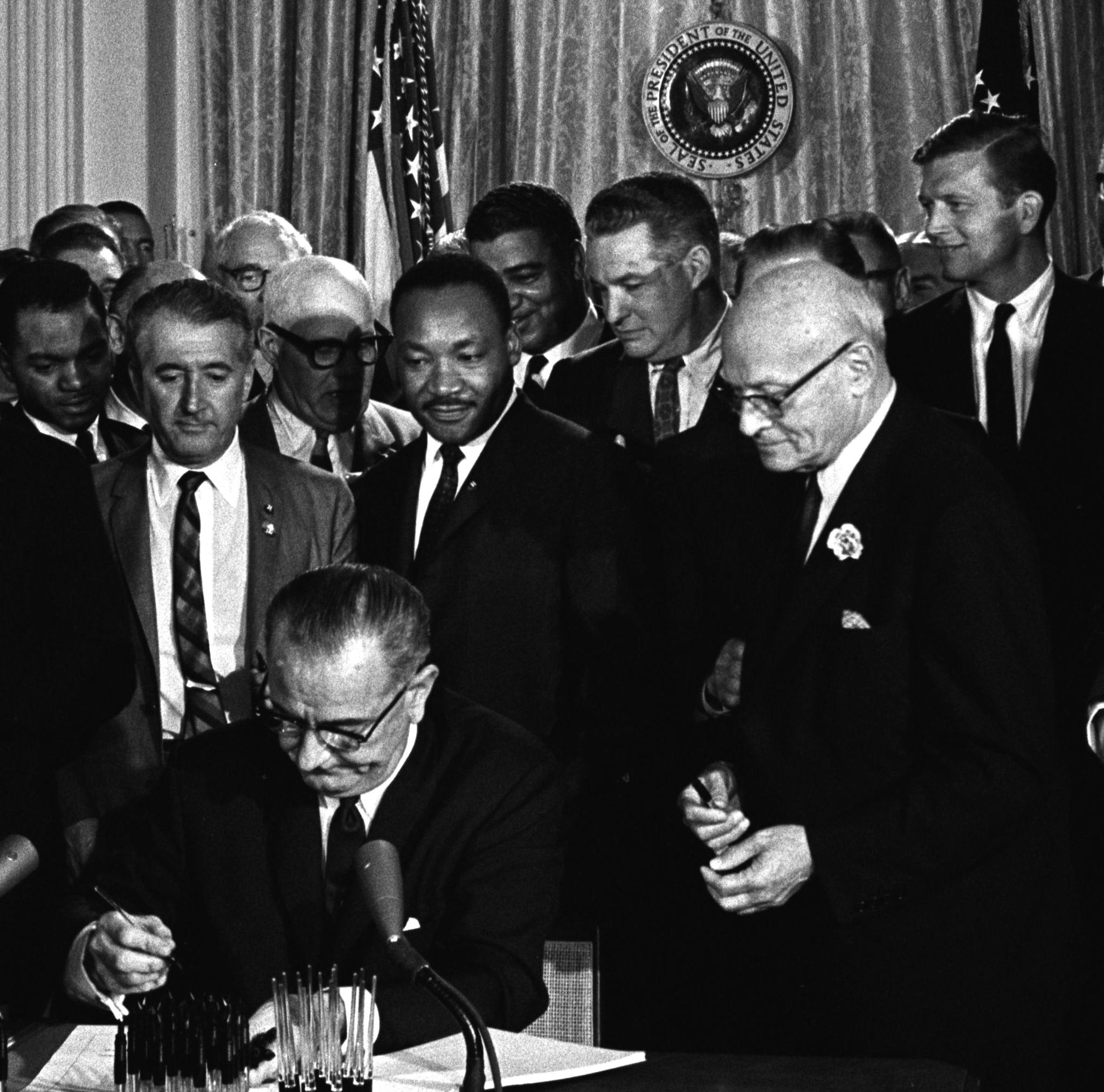Kennedy Space Center Associate Director Kelvin Manning was the keynote speaker at the Black Employee Strategy Team’s (BEST) “Keeping the Dream Alive” celebration Jan. 30 to honor Dr. Martin Luther King Jr. and kick off Black History Month.
BEST is an employee resource group that represents the voice of the African-American workforce at Kennedy.
“It works to provide social, humanitarian and professional opportunities to the black community at Kennedy,” said D. Lance Rogers III, an electrical engineer in the Engineering Directorate and BEST member.
Manning’s presentation was a walk back in history to the beginning of the civil rights movement and some of the people who played a part in moving these efforts forward.
“Celebrating the legacy of Dr. Martin Luther King Jr. is a time for the nation to remember the injustices that Dr. King fought, a time to remember the fight for freedom, equality and dignity of all races and peoples, a time to remember the message of change through nonviolence,” Manning said.
After the Civil War, in a majority of the U.S., racial segregation laws were enacted during the reconstruction period. Basically, they mandated a separate but equal status for all African-Americans. Many states and cities across the country imposed laws that forbade interracial marriage and ordered business owners to keep their black and white clientele separated.
Manning talked about John Lewis, a black congressman from Georgia who has served in the U.S. House of Representatives for more than 23 years. During a series of talks at Stetson University highlighting key figures of the civil rights movement, Manning had the opportunity to meet Lewis and tell him he worked for NASA.
“It is people like John Lewis, who in 1961 at the age of 21, made the decision to join Rev. Dr. Martin Luther King Jr. and become a part of the civil rights movement,” Manning said.
Lewis remained at the vanguard of progressive social movements and human rights struggles in the U.S. As a young man, he served as the chairman of the Student Non-violent Coordinating Committee. He was arrested 40 times and participated in numerous lunch counter sit-ins. In Selma, Alabama, he led the first march there in what became known as “Bloody Sunday” and is featured in the recent motion picture “Selma.” At the age of 23, he was a keynote speaker at the historic March on Washington on Aug. 28, 1963.
King was the featured speaker at the March on Washington, and was best-known for his “I Have a Dream” speech, which resonated around the country.
Some of the other people recognized for their efforts included the Tuskegee Airmen, who were part of a program in Alabama to train black Americans as pilots. First Lady Eleanor Roosevelt became interested in the flight school’s efforts and requested a flight with one of the airmen. Instructor Alfred Anderson, known today as “The Father of Black Aviation,” was the pilot who gave Mrs. Roosevelt a ride over the skies of Alabama for more than an hour.
In 1947, Jackie Robinson became the first African-American to play major league baseball, with the Brooklyn Dodgers. His story was told in the recent movie, “42.”
“A lot of events that happened in that movie occurred right here in Central Florida,” Manning said. “It’s an eye-opener.”
Also in 1947, Martin Luther King Jr., at the age of 18, decided to become a minister and delivered his first prepared sermon at Ebenezer Baptist Church in Atlanta. In 1951, Brevard County NAACP leader Harry Moore and his wife Harriette, were killed by a bomb blast beneath their bedroom on Christmas Day.
In 1954, the U.S. Supreme Court, in a landmark decision, ruled unanimously in Brown v the Board of Education, that racial segregation in American public schools was unconstitutional. In 1955, Mrs. Rosa Parks, a 42-year-old seamstress, refused to give up her seat to a white passenger on a Montgomery, Alabama, bus, and was arrested. Dr. King became involved in the incident, which later led to the famous Montgomery bus boycott.
Just two years later, Congress passed the Civil Rights Act of 1957, which was primarily a voting bill. It was the first civil rights legislation passed since 1875.
In 1962, riots broke out on the campus at the University of Mississippi, requiring 12,000 federal marshals to restore order, when James Meredith, a 28-year-old Air Force veteran, was enrolled under a court order.
In 1963, King met with President John F. Kennedy. Shortly afterward, he delivered his famous “I Have a Dream” speech on the steps of the Lincoln Memorial to a crowd estimated at 250,000.
Three civil rights workers, one black and two white, were murdered on a trip through Philadelphia, Mississippi in 1964. Their bodies were found 44 days later in an earthen dam near the murder site and sparked national outrage and a massive federal investigation. This, among other events, helped push through the Civil Rights Act of 1964. It was signed into law on July 2, 1964, by President Lyndon B. Johnson.
Johnson also signed into law the Voting Rights Act in 1965, which prohibited racial discrimination in voting. In 1966, Dr. King marched on the issue of open housing in Chicago, and was stoned by an angry crowd.
In 1967, Thurgood Marshall was confirmed by the U.S. Senate and became the first African-American to sit on the U.S. Supreme Court. A year later, on April 4, 1968, Dr. King was assassinated in Memphis, Tennessee. He was 39 years old.
“Over the years, as a result of the challenges and struggles that Dr. King confronted and overcame, people of my generation and those that have followed, have been given opportunities that we otherwise might not have had,” Manning said.
Rogers agreed: “It is this day, just over 50 years after the Civil Rights Act of 1964, the landmark legislation which Dr. King sacrificed so much to achieve, that people like myself are able to stand on the strong shoulders of giants to grace the grounds of NASA, one of the most prestigious and technologically advanced organizations in history.”
“This event allows us to open the doors of discussion with the Kennedy community,” said DeAntae Cooper, a program analyst in the Chief Financial Office and BEST co-chairperson.
Manning concluded his thoughts by saying: “Celebrating the legacy of Dr. Martin Luther King Jr. is a time for the nation to remember the injustices that Dr. King fought. A time to remember his fight for the freedom, equality and dignity of all races and peoples. A time to remember his message of change through nonviolence and a time for all of us to speak up against injustice.”




























